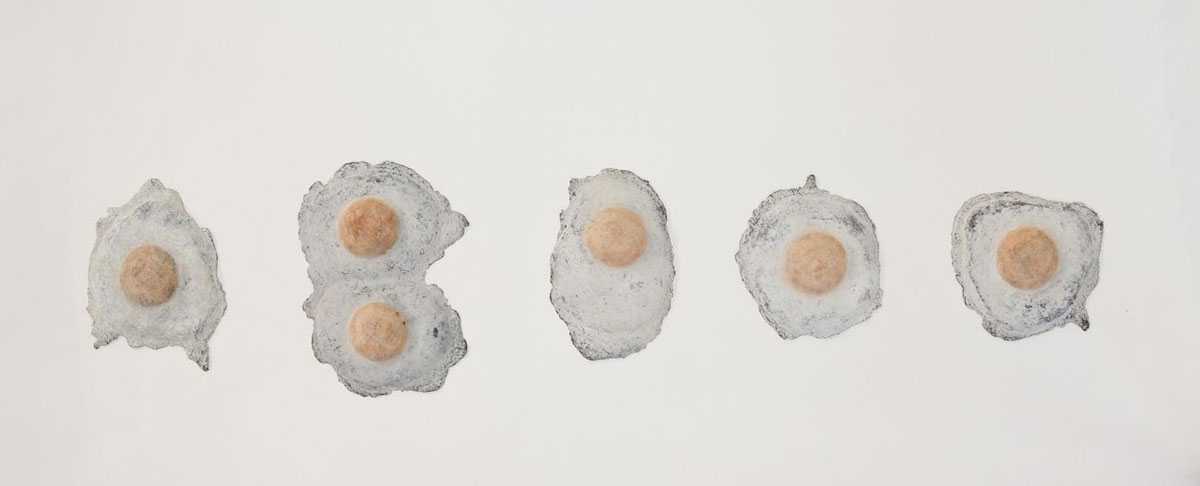
© Michelle Nikou
How is it that some exhibitions disarm you from the outset? Michelle Nikou’s survey exhibition, a e i o u, had this effect on me. Not familiar with the artist or her work, it was an encounter without preconceptions. Nikou’s unabashed curiosity for the world of objects, internal psychological states, alchemy and transformation was matched by my own. I wanted to know about her age, life experience and cultural background; which is to say, the work and exhibition had an exceptionally captivating quality to view and experience.
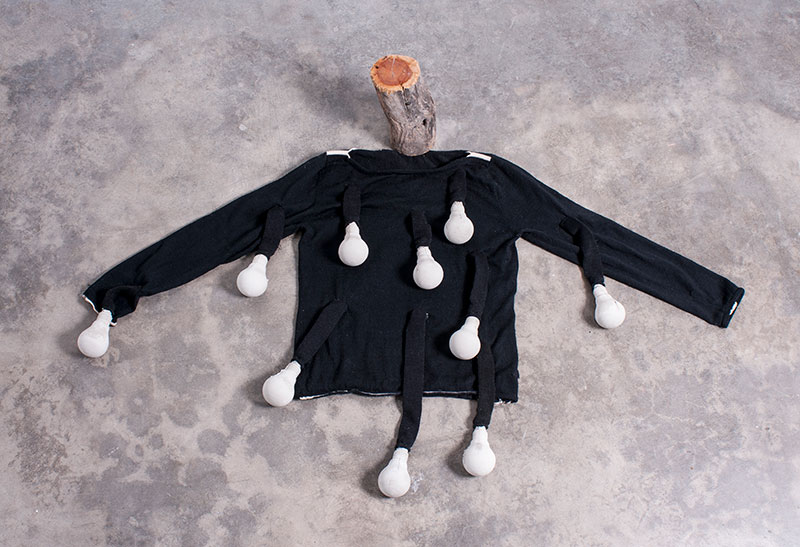
© Michelle Nikou
No doubt this had something to do with the gallery space itself. The celebrated former home of John and Sunday Reed is a modern architectural masterpiece. As a repurposed gallery space it retains the structural qualities of a mid-twentieth century house: a combination of small rooms with garden outlooks, tight little corridors finishing in cul de sac spaces and an austere but light-filled living space. Viewing artwork in this space is a different proposition to the model of the white cube located next door and elsewhere. For a start, it’s not possible to scan the room and get the exhibition’s measure. The experience is more like a series of close encounters. And while the building is not homely by any stretch it’s nevertheless unmistakably domestic.
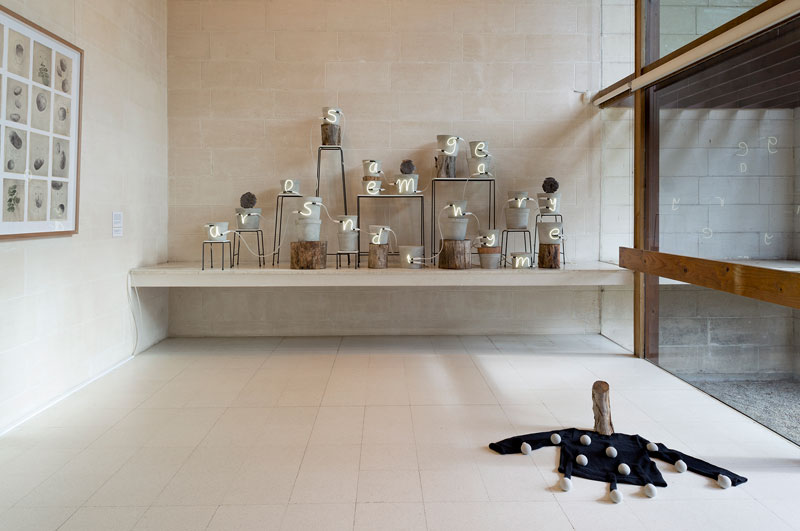
This seems important as Nikou’s work draws on the secret life of inanimate objects from everyday life. In Nikou’s multidisciplinary art practice the familiar forms and detritus of domestic life – food, food trays, laundry baskets, clothes, tissue boxes, spoons, buttons, and handkerchiefs – have been either literally recast in bronze or repurposed in ways that imbue them with an uncanny quality. Take three steps and you are literally upon a cabinet in which thirteen spoons, Spoons (2000), are arranged like crusty museum relics. Recast in lead, they contain the shape of food stuffs, or is it cotton wool? Regardless, their arrangement possesses a neat seriality totally at odds with their feral nature. Nearby, a row of five cast-cubed shapes reveal themselves, on close inspection, to be a series of propped-up cast bronze tissue boxes Untitled (2001). The boxes perforated lids are similarly recast and appear framed like matching puzzle pieces.
This work, like many others in the exhibition, engages in the provocative juxtaposition of domestic and industrial idioms. So, a laundry basket is interwoven with neon, or a disposable material product such as a cardboard tissue box is reimagined as a durable metal object. The juxtaposition contains a tremulous emotion of grief, sadness and melancholy.
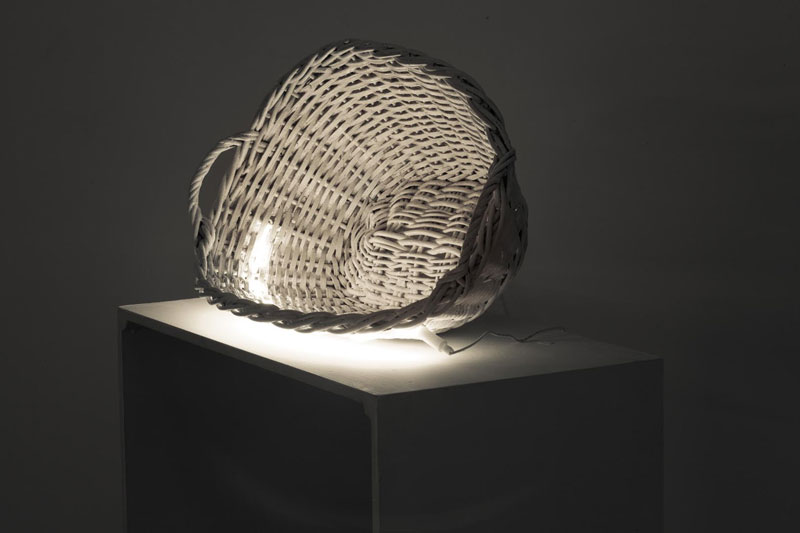
Photo: Sam Roberts © Michelle Nikou
Pop art and its interest in popular and consumer culture, as well as Surrealism, the avant-garde movements which sought to uncover the irrational and unconscious mind, hover at the edges of Nikou’s work. But its seriocomic quality, its oftentimes pared-back monochromatic palette, and existential longing seem also rooted in a middle-European tradition.
Objects, letter forms and faces appear and reappear in Nikou’s practice in a kind of personal symbology that imbues them with an unsettling psychology. Eggs, for instance, appear in different iterations: cracked and dripping as sculptures mounted to the wall and whole, also in photographic form in an etching. While it’s tempting to read into them metaphoric meaning – about the origins of life, for instance – the prevalence of food (and food containers) seems to situate the work on the one hand in a more prosaic realm also as part of a broader discourse around consumption, sustainability and humanity’s capacity for survival. These compelling undercurrents struck me much later.
Nikou’s technical and conceptual flair is also enthralling, as demonstrated by her capacity to convey feeling through material and formal processes, and the artwork’s ability to capture some essential quality of time – as the duration of life, no less.
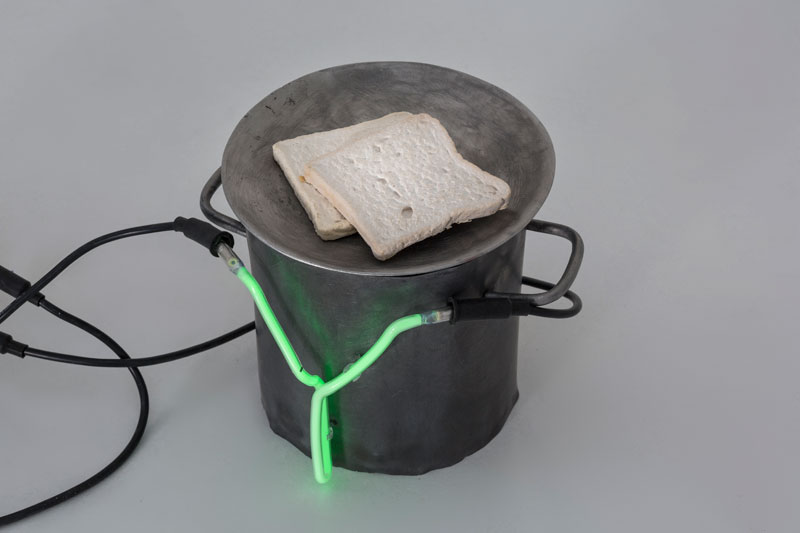
© Michelle Nikou

